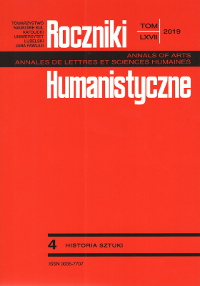The style of ‘regular irregularities’ – rococo gardens and their reception in Polish garden art of the 18th century
The style of ‘regular irregularities’ – rococo gardens and their reception in Polish garden art of the 18th century
Author(s): Seweryn MalawskiSubject(s): Fine Arts / Performing Arts, Architecture, History of Art
Published by: Towarzystwo Naukowe KUL & Katolicki Uniwersytet Lubelski Jana Pawła II
Keywords: Rococo; Baroque; nature; gardens; Poland; Saxony
Summary/Abstract: The stylish difference of the Rococo in the garden art is still the topic of the researchers’ discussion. The Rococo, which was in opposition to the formal and rhetorical art of the Baroque, brought a new value to the eighteenth-century gardens. This value was expressed primarily in the elements of the composition, asymmetry, irregularity, wavy line, fragmentation of form and ornamentation, as well as in relation to nature and specific mood.France is considered to be the fatherland of the Rococo style, from where this new, light style has spread to other European countries. The dissemination of new ideas was favored by print theoretical dissertations and collections of projects. The works by authors such as L. Liger, J-F. Blondel, J-B-A. le Blond, F. de Cuvilliés, M-A. Laugier, G-L. Le Rouge, W. Chambers, S. Switzer and B. Langley enjoyed particular popularity.Many impressive gardens with Rococo features were created especially in Germany and Poland. Their special flourishing in Poland fell on the times of the Polish-Saxon Union, and especially during the reign of Augusts III in the years 1733-1763.Special attention should be paid to the projects related to the patronage of the first minister H. Brühl. Rococo features can be found in several of his gardens, such as garden at Nowy Świat in Warsaw, garden in Wola, the unfinished garden project for the former Sanguszko palace or a garden in Brody (Pförten). Rococo compositions were also created in the gardens of Prince Adam Poniński at Żyzna street in Warsaw and in Górce. In 1966, the concept of a magnificent royal garden at the Ujazdów Castle was created. Noteworthy is also the arrangement of gardens in Puławy from the times of Zofia and August Czartoryski as well as Flemming in Terespol. The designers of many Polish gardens of that period were Saxon architects, such as: J.D. von Jauch, J.F. Knöbel, C.F. Pöppelmann, E. Schröger or J.Ch. Knöffel. From the 1770s, Rococo creations in Poland began to give way to landscape concepts.
Journal: Roczniki Humanistyczne
- Issue Year: 67/2019
- Issue No: 4
- Page Range: 61-107
- Page Count: 47
- Language: English

